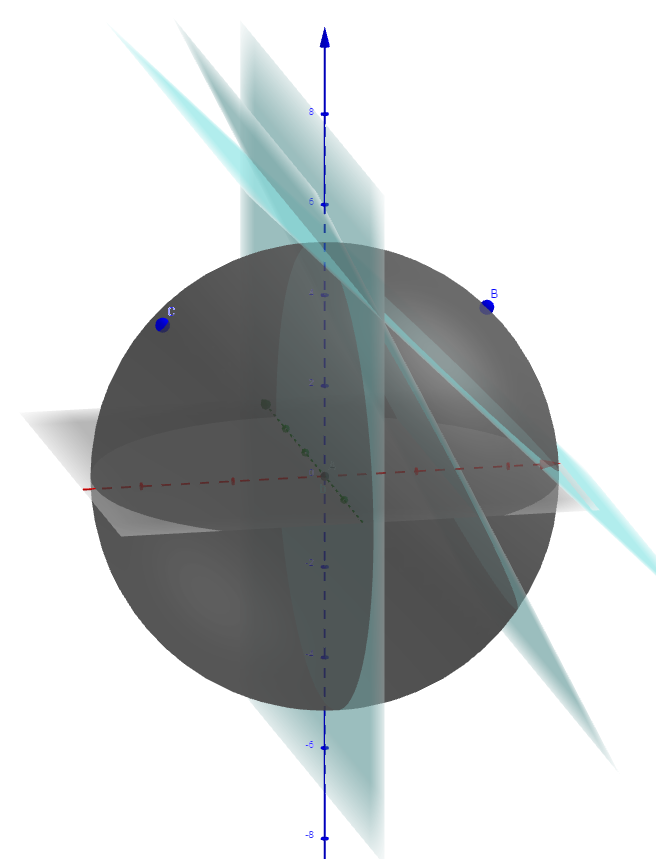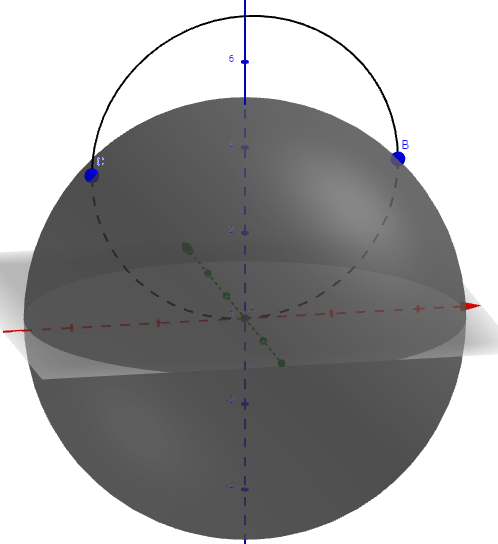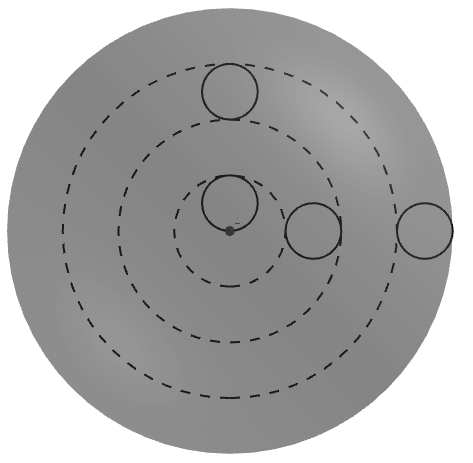Circles in 3-space
Can you write all of (3-space) as the union of disjoint geometric circles? Give an example or prove that you can't.
(A geometric circle is a circle which actually has a center and some fixed positive, finite radius -- so not just a generic loop. The circles need not all have the same radius.)
No vote yet
1 vote
Easy Math Editor
This discussion board is a place to discuss our Daily Challenges and the math and science related to those challenges. Explanations are more than just a solution — they should explain the steps and thinking strategies that you used to obtain the solution. Comments should further the discussion of math and science.
When posting on Brilliant:
*italics*or_italics_**bold**or__bold__paragraph 1
paragraph 2
[example link](https://brilliant.org)> This is a quote# I indented these lines # 4 spaces, and now they show # up as a code block. print "hello world"\(...\)or\[...\]to ensure proper formatting.2 \times 32^{34}a_{i-1}\frac{2}{3}\sqrt{2}\sum_{i=1}^3\sin \theta\boxed{123}Comments
This is a cool problem. You can cover a plane with concentric circles leaving one point out (the center). You could stack these and cover all of 3-space except for a line, and you can even make that line into a curve, but not a circular one because you don't have second holes in your planes (and as far as I can tell there's no way to generate two-hole planes). So we can't start with planes, but have to work in 3-d from the start. I tried tori swallowing each other but couldn't make that work. Spheres, however, seem to work, as follows. First, establish that we can make any sphere from circles, omitting any two given points. Start with the great circle intersecting the plane at the midpoint of and orthogonal to the line connecting the two points. Fill each hemisphere starting with this circle by "pivoting" our plane on the tangent to the sphere midway between our two points until we reach a circle whose center is on the same radius as our point, and then proceed with parallel planes until we reach the limit at our omitted point.
 Then we can cover 3-space with a single system of concentric spheres, arranging the two holes in each sphere into circles which we then fill with circles.
Then we can cover 3-space with a single system of concentric spheres, arranging the two holes in each sphere into circles which we then fill with circles.
 Where these circles begin and end (at the spheres nearest and farthest from the center), they take up a single hole in some sphere. The other hole, which can be anywhere, will serve as the start of the next circle. The center starts the first circle.
Where these circles begin and end (at the spheres nearest and farthest from the center), they take up a single hole in some sphere. The other hole, which can be anywhere, will serve as the start of the next circle. The center starts the first circle.

Log in to reply
Great answer! :) This is very similar to my own. In fact, you can write 3-space as a disjoint union of circles that all have the same radius -- but such a solution can't be visualized like yours and requires some deep(ish) foundational mathematics. It's interesting to try, though. :)
Welcome back Maggie!
Log in to reply
I finished studying for my qualifying exams :) So it's good to be back on the internet